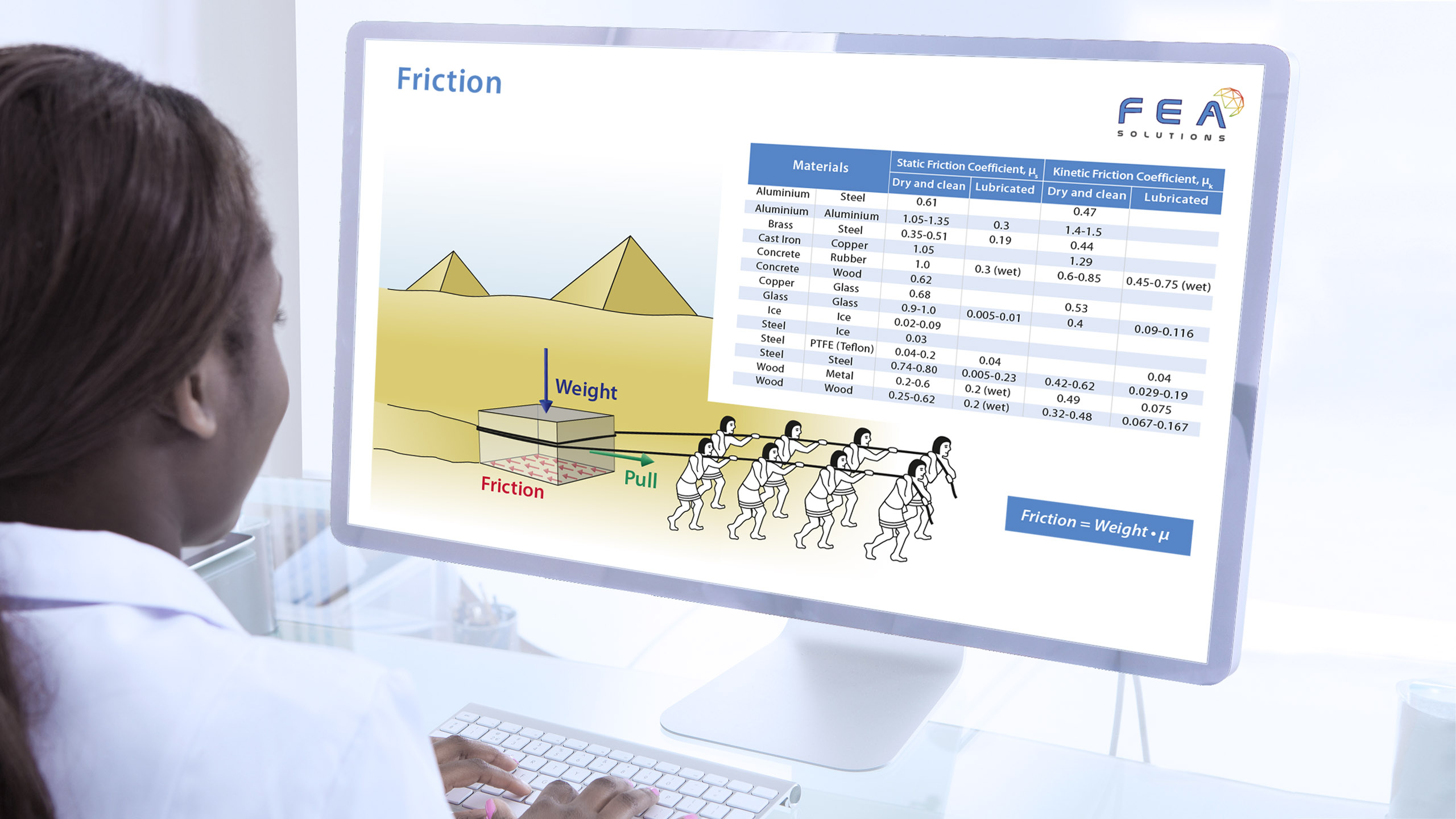
22 Feb Friction
Friction is the resisting force which occurs when two objects in contact with one another are sliding (or want to slide) against each other. This resisting force is equal to the force normal (perpendicular) to the contact surface multiplied by the friction coefficient.
There are two types of friction coefficient, static, and kinetic (or sliding) friction. Static friction, also called stiction, is when both parts are at rest, and kinetic friction is when there is already movement along the contact surface.
The friction coefficient between two bodies is dependent on the following:
– Material
– Surface finish
– Lubrication status
Friction in FEA can only be considered when non-linear contacts (https://fea-solutions.co.uk/non-linear-contact/) are used. The non-linear contact can either be frictional, or frictionless. A frictionless contact assumes the friction coefficient between surfaces is 0, and there is no resistance to either body sliding over or past the other.
Typically a frictional non-linear contact is only required when there is a load transferred from one part to another parallel to the contact surface. Frictionless contacts should be used in FEA if surface finish and lubrication status are unknown.
Please call us today on +44 (0)1202 798991 for any engineering analysis requirements you might have.
